After nearly one hundred years and countless students and instructors, the Folk School has accumulated a number of noteworthy special places. I consulted a mix of Folk School participants in preparation for this post by asking “What is your favorite spot on campus?”. Turns out, there are as many favorite spots and reasons for considering them special as there are people.
There are spots which remind us of the shoulders upon which we stand with their deep connection to the past. There are spots where we can slip away to let Mother Nature soothe our souls. There are spots where we like to gather with friends. And there are spots which hold our own special memories. Of course, there are the beloved studios where we can immerse ourselves in creativity and making but I already covered these spots in my previous post Folk School Studios—Where the Magic Happens. So I did my best to boil it all down into today’s post.
Farm House
Let’s start with the Farm House because this is where it all began. The front page of the second edition of the Folk School newsletter, issued in August 1926, showcases the Farmhouse.
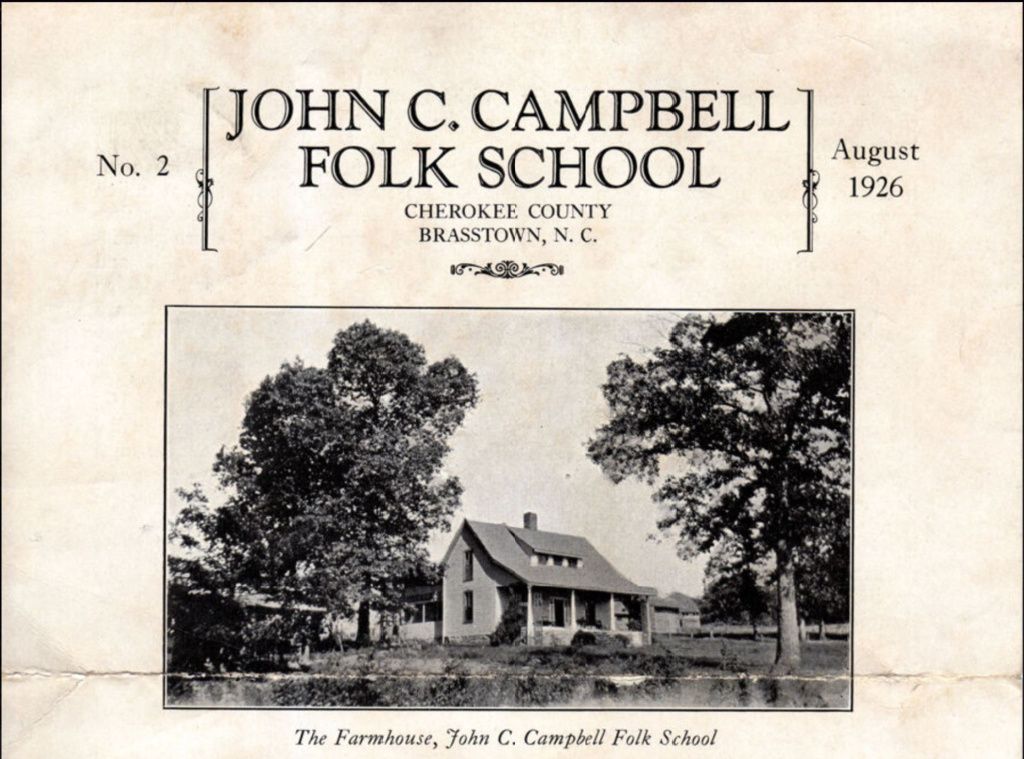
The bulletin’s authors, Olive D. Campbell Director and Marguerite Butler Treasurer, explain “The last few months, since our first bulletin in March, have been important ones in the life of the John C Campbell Folk School. The faded yellow homestead on our farm, sadly in need of paint and repairs, has become a trim gray farmhouse with green trimmings and rose-covered trellises.” Despite its impressive pedigree, this small, unassuming structure is easy to overlook. Here’s how the Farm House looks today as viewed from the School’s gardens.
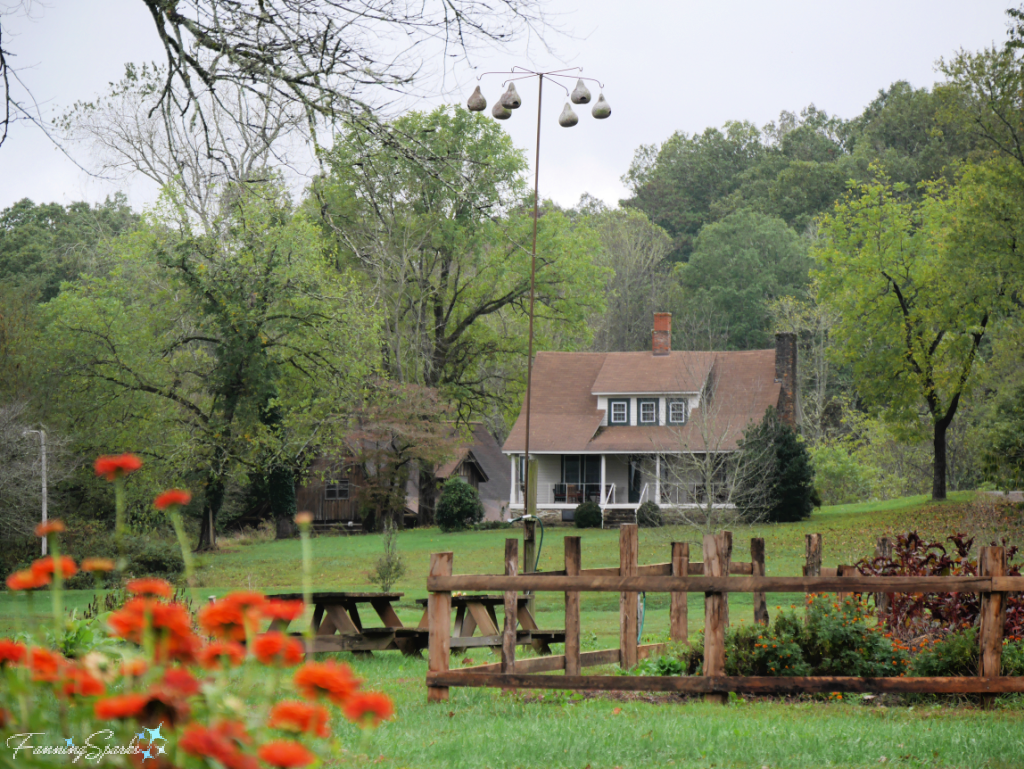
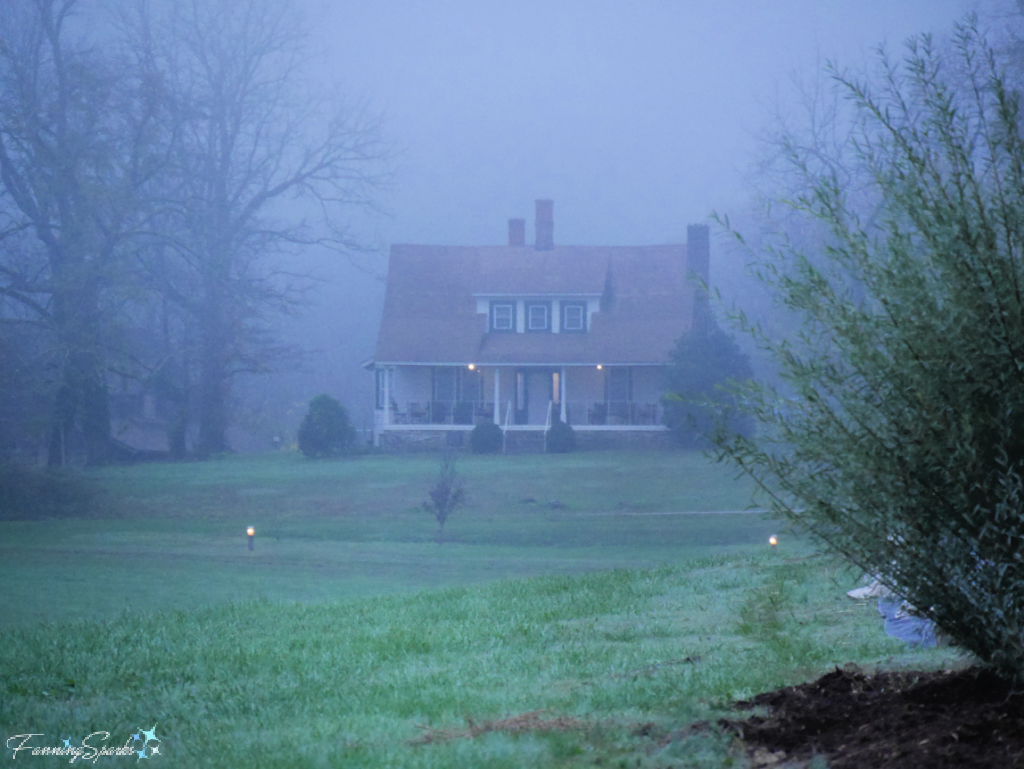
A closer look reveals an inviting front porch in the early morning sunshine.
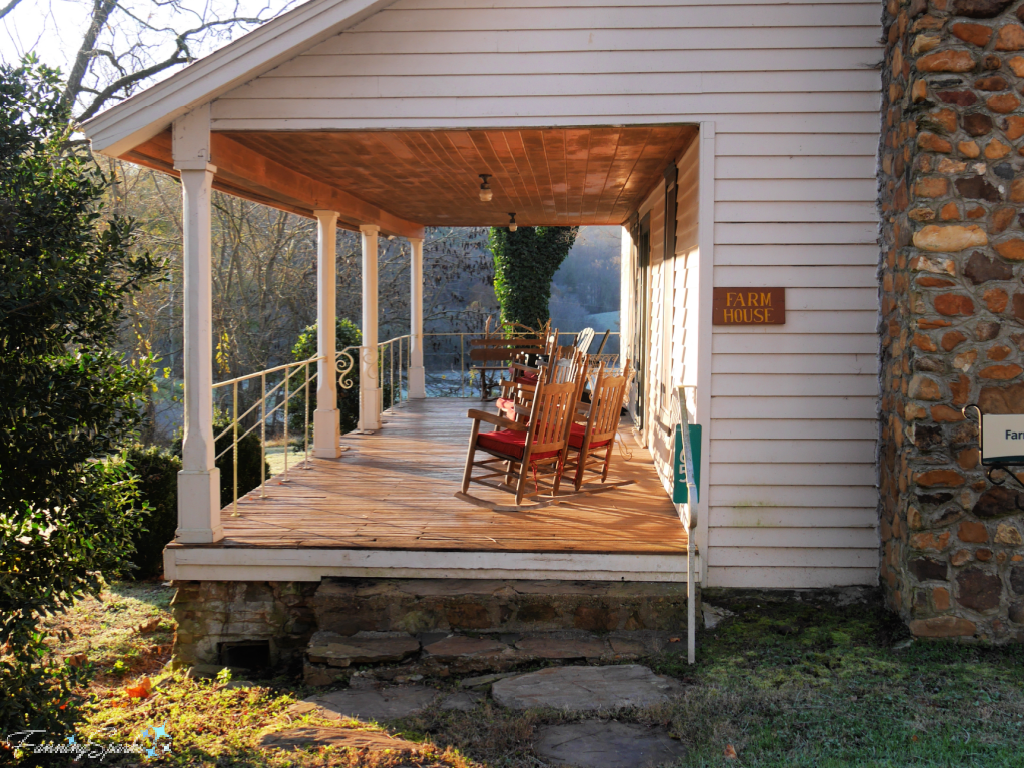 Here’s a peek inside the Farm House. It’s intriguing to imagine Olive Campbell hosting a meal at this table.
Here’s a peek inside the Farm House. It’s intriguing to imagine Olive Campbell hosting a meal at this table.
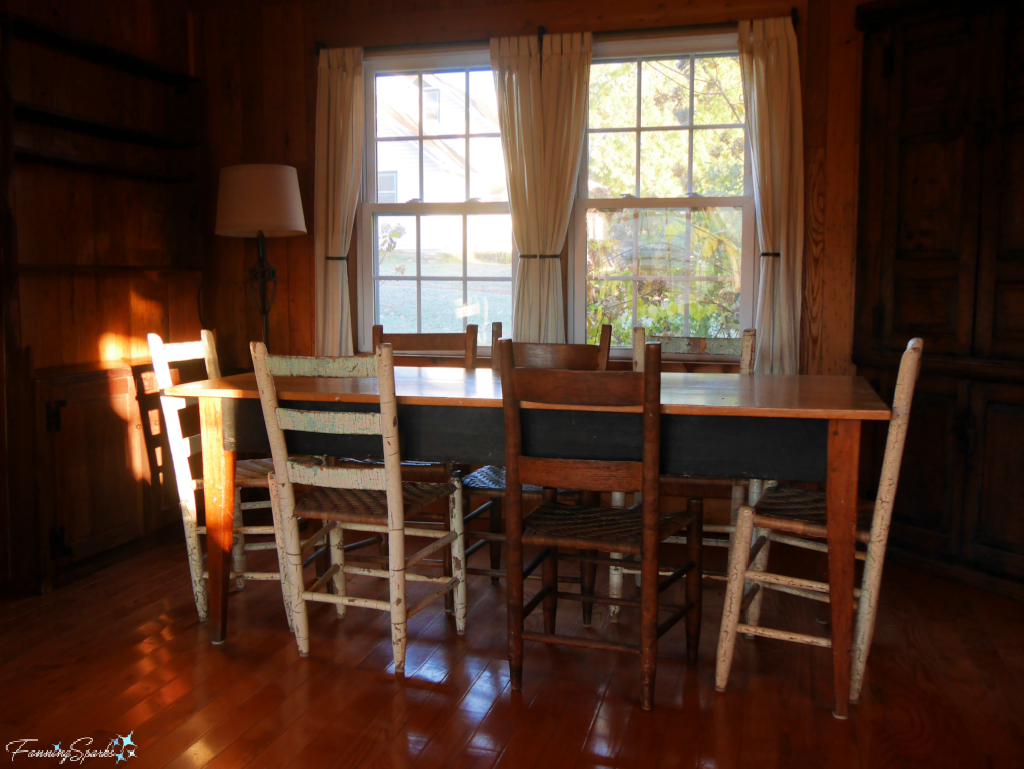
Log Museum
Another favorite spot with a strong connection to the early days of the Folk School is the Log Museum. This structure was built in 1926 for the express purpose of housing traditional artifacts. It was constructed by members of the community who relocated and combined two existing cabins—the Brendle Cabin from Clay County and the Caldwell Cabin from Cherokee County. There is a series of eight photographs from 1926, believed to have been taken by Marguerite Butler (Bidstrup), chronicling the construction of the Log Museum (see More Info below). Today the Log Museum, which is located in front of the School’s gardens, looks like this.
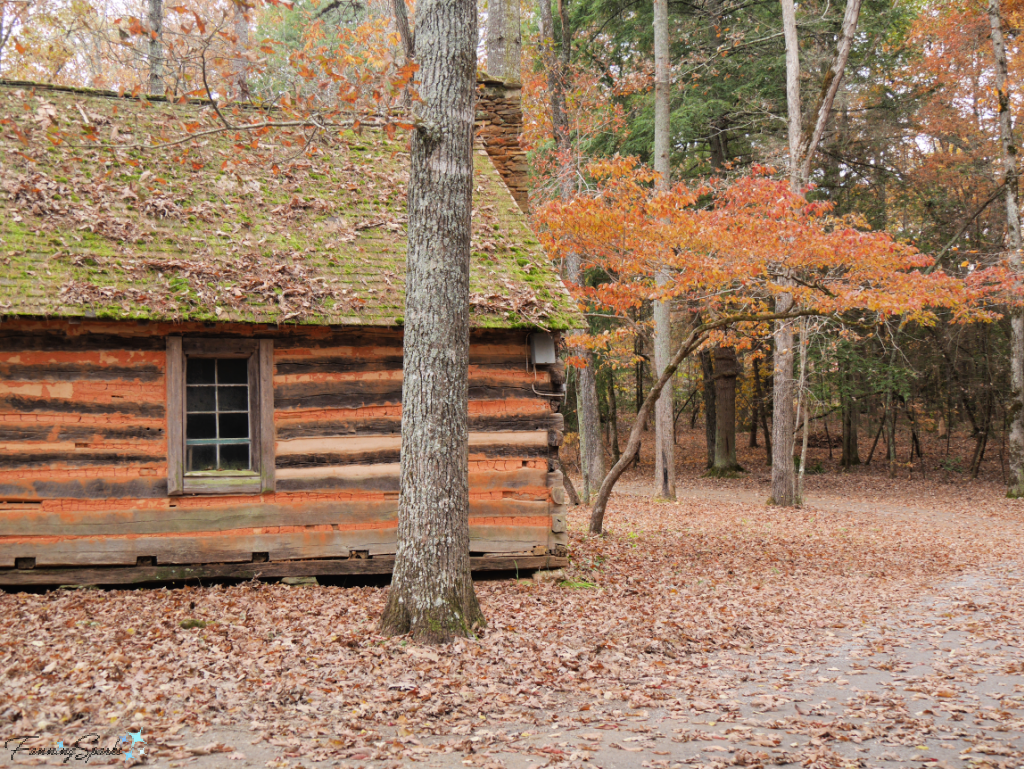
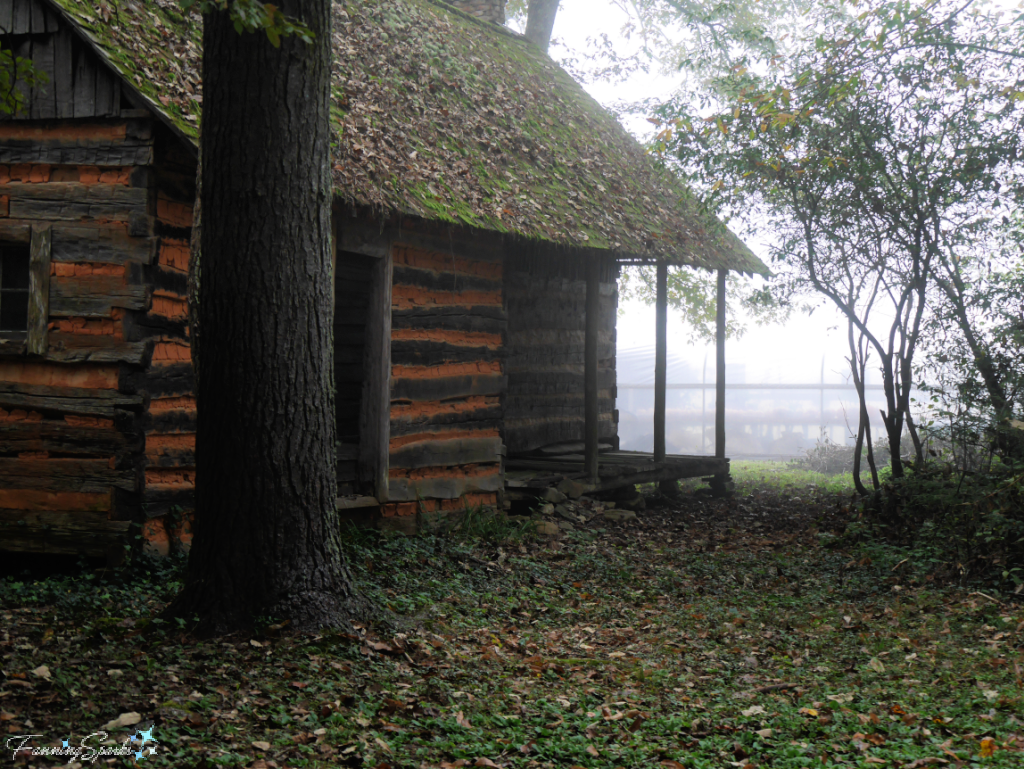
A peek inside reveals some interesting old items. As noted in the Western Carolina University (WCU) Hunter Library Digital Collections “The original intent of the Log Museum was to preserve the “old ways” and craft traditions of pioneer times; the hand-hewn cabins housed community-donated relics such as a loom, spinning wheel, butter churn, rifle, ceramic vessels, hearth brooms, and farm implements.” It appears some of these relics may still be in place.


Spring House
Another favorite spot with deep roots in the Folk School’s past is the Spring House. Georg Bidstrup, a Dane who came to the Folk School in June 1926 to run the farm and provide recreational activities for the students, is credited with constructing a springhouse, dairy barn and coop creamery. A photo from around 1930 shows three men standing outside the Spring House holding containers of milk (see More Info below). As noted in the WCU Hunter Library Digital Collections “Milk was stored in Spring House where it was kept cool by a running spring viaduct that cut through the building.”
Today, the historic Spring House sits quietly behind the Clay Spencer Blacksmith Shop. The bubbling little stream, the simple foot bridge and the beautiful trees make this an idyllic spot.
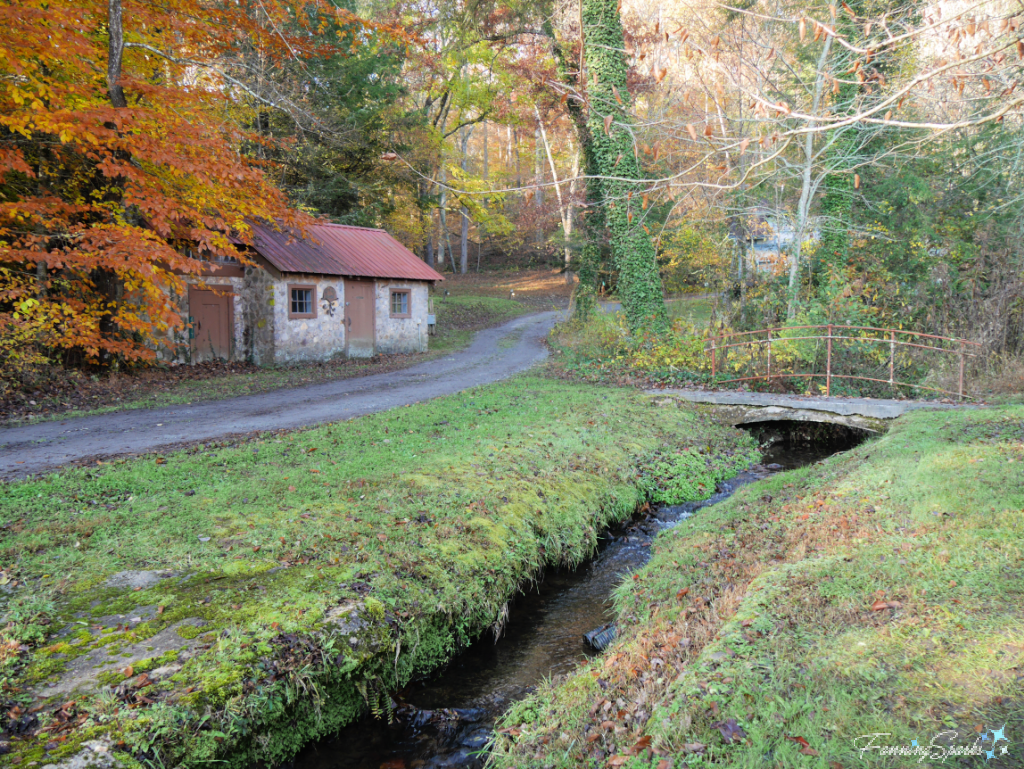

Rhythm Pavilion
Some of our favorite spots on the Folk School campus are dedicated to the memory of loved ones. The John Neil Davidson Rhythm Pavilion is a case in point. It is a simple gazebo situated at the edge of the vegetable garden with a gorgeous view of the surrounding mountains.
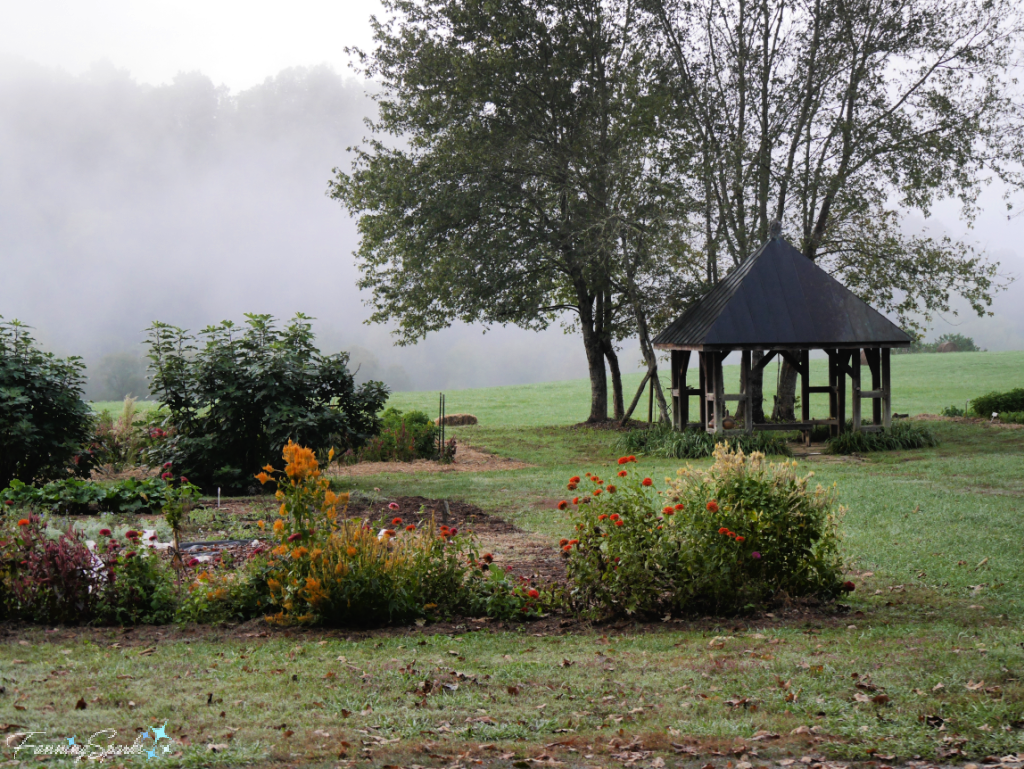
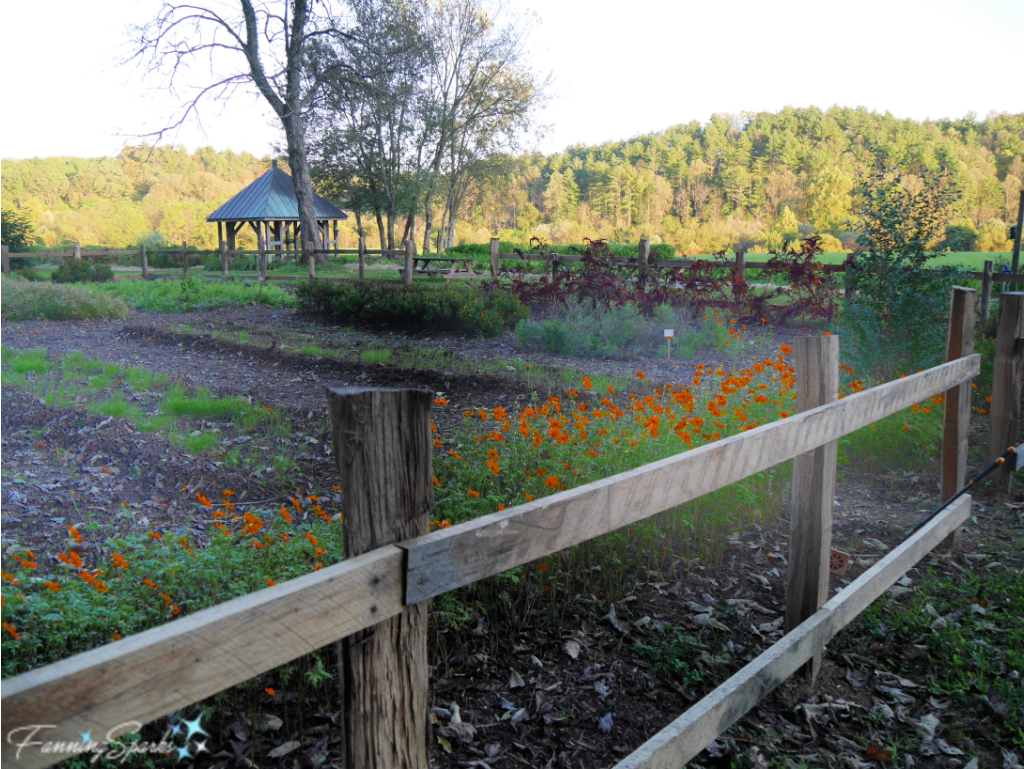
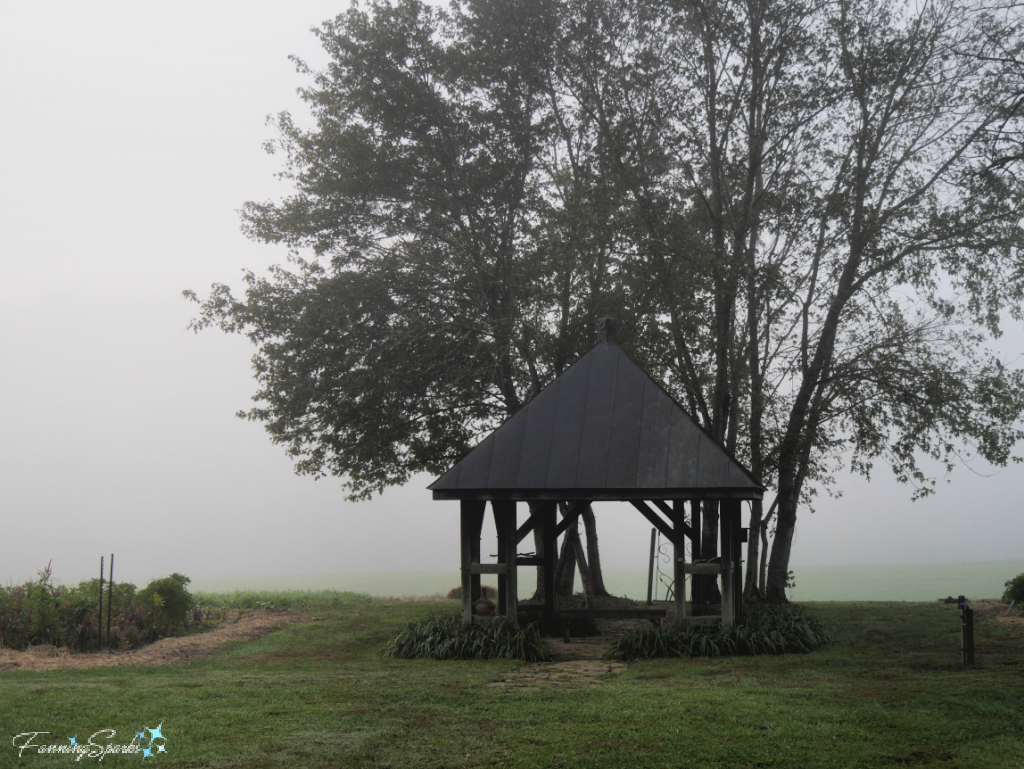
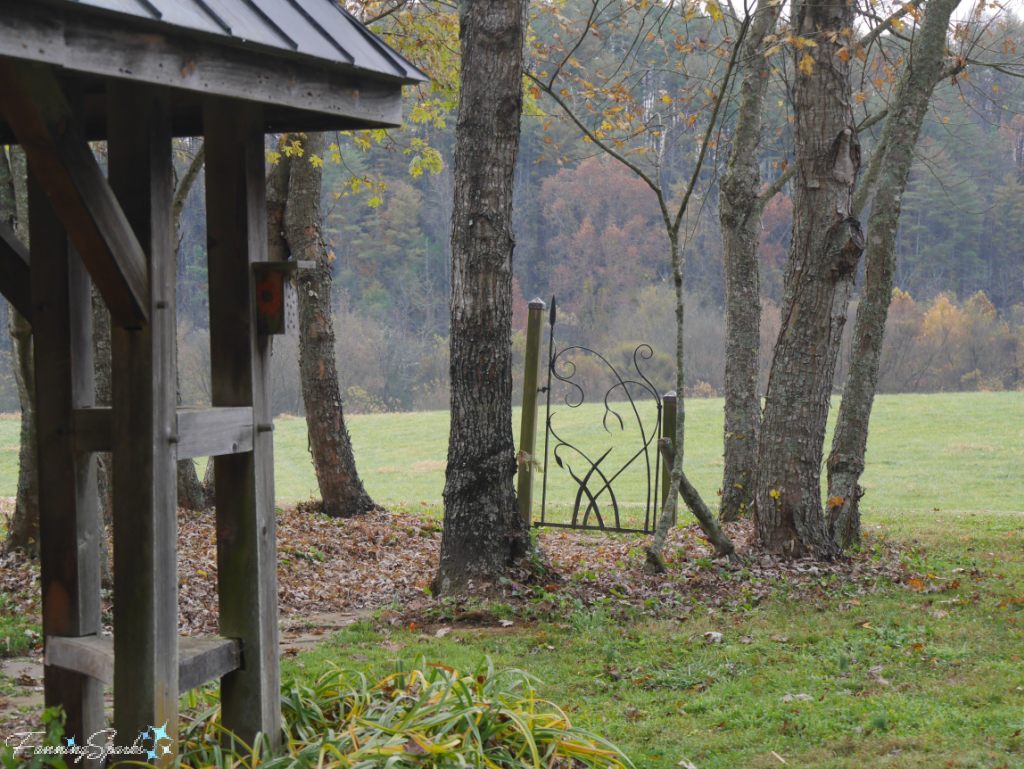
Rainbow Bridge
The pretty metal garden gate shown above leads to a mown path through the hayfield. I often follow this path to visit another favorite spot. Rainbow Bridge is part of the Little Brasstown Creek trail—a natural walking path that follows the banks of the creek. The highly-rounded arch of Rainbow Bridge is an unexpected surprise amidst the untamed landscape. It always reminds me of the stunning moon bridges I saw in China and Japan.
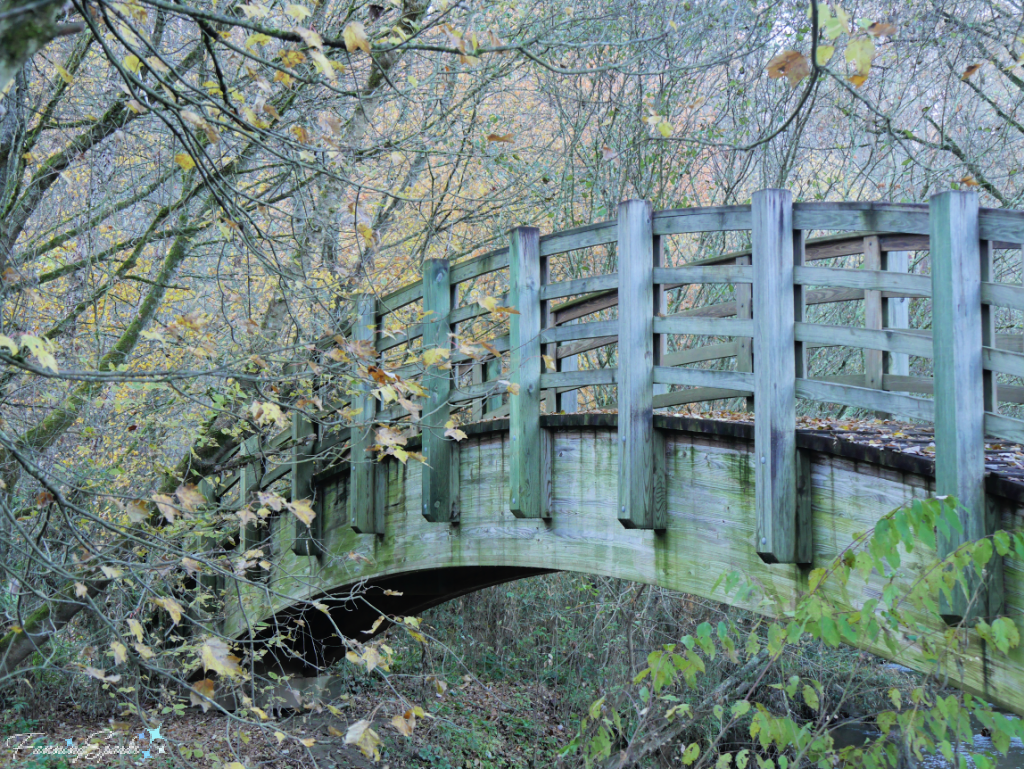
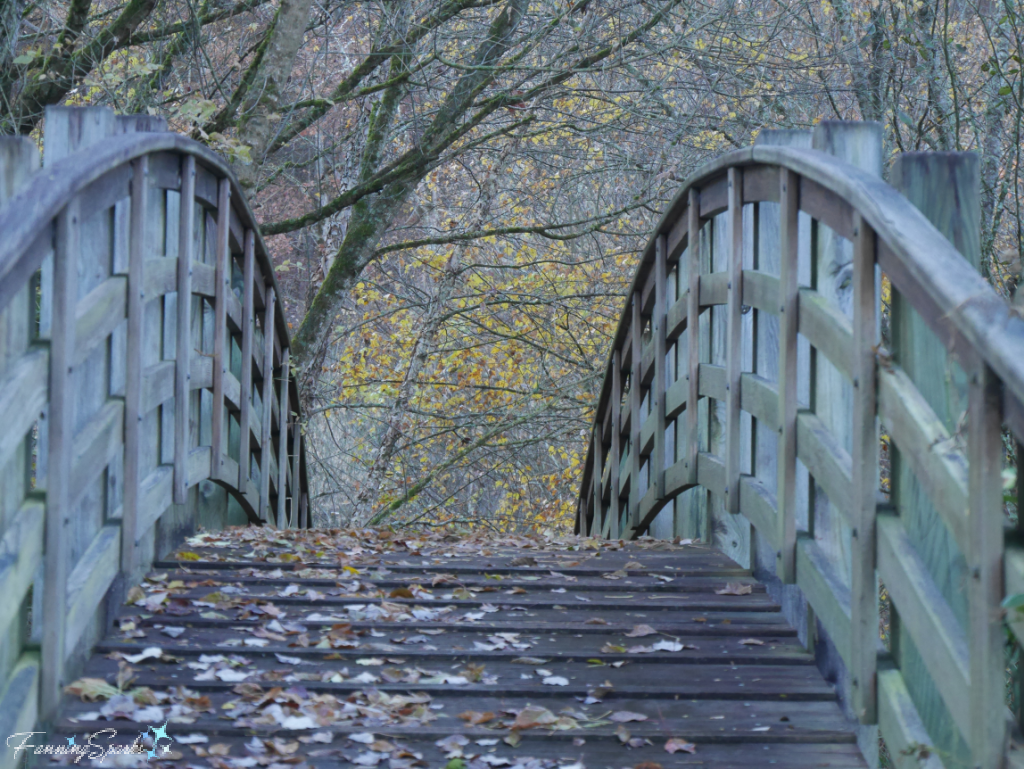
The Gardens
Work Study Program participants spend a lot of time in the School’s vegetable gardens. The last few weeks we have been harvesting, weeding, transplanting, mulching and getting the gardens ready for winter.
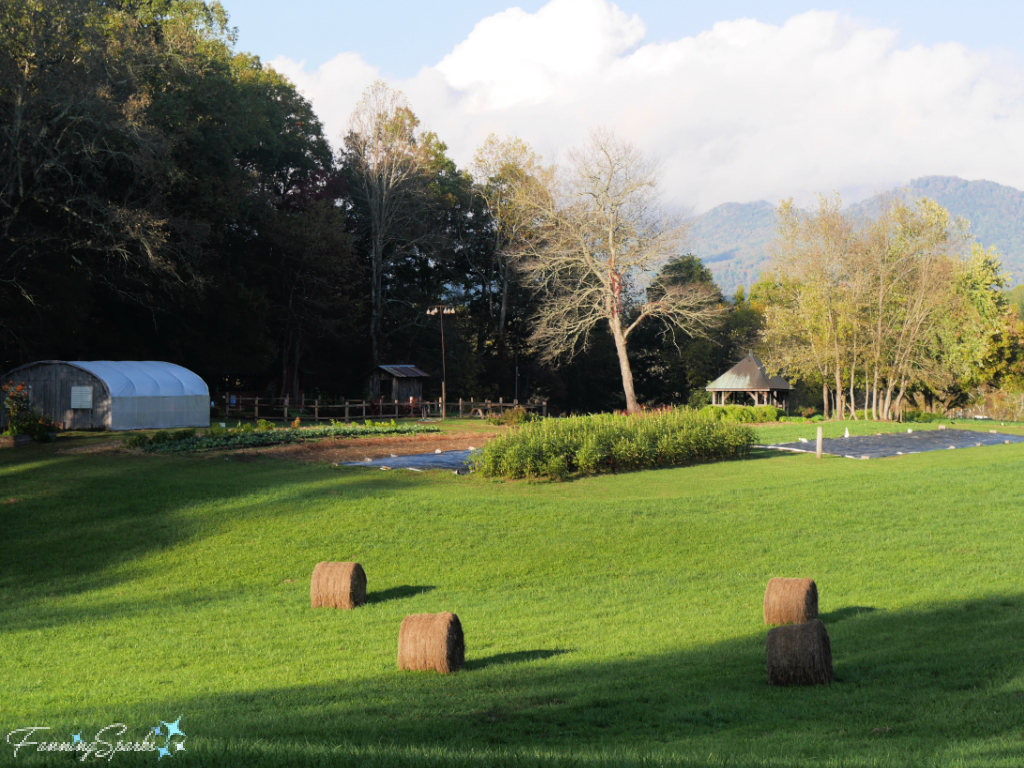
Judging from the frost on the ground, it looks like we got the row covers installed just in time!
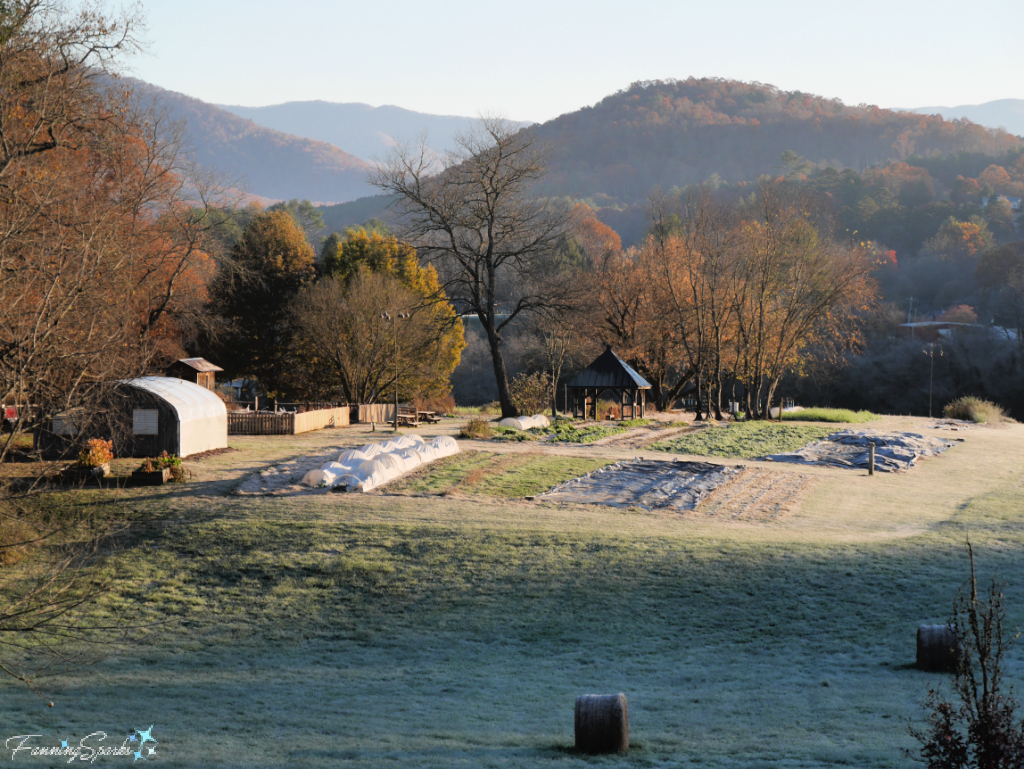 The gardens are beautiful at any time of the day but they’re absolutely stunning on a misty mountain morning.
The gardens are beautiful at any time of the day but they’re absolutely stunning on a misty mountain morning.
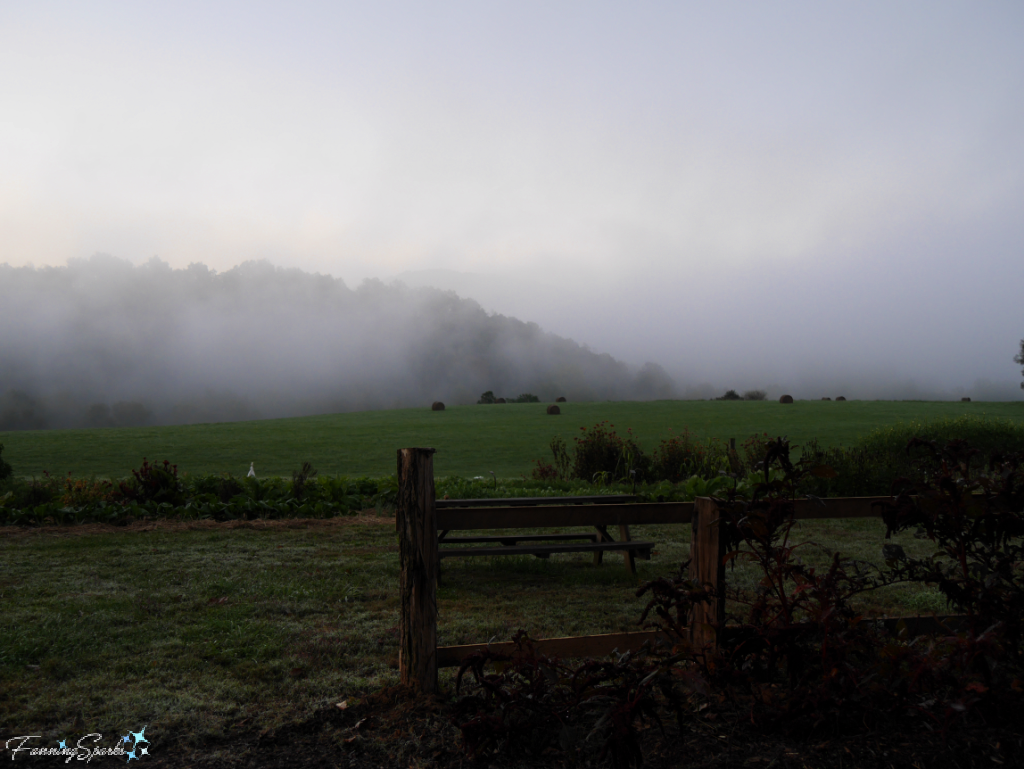
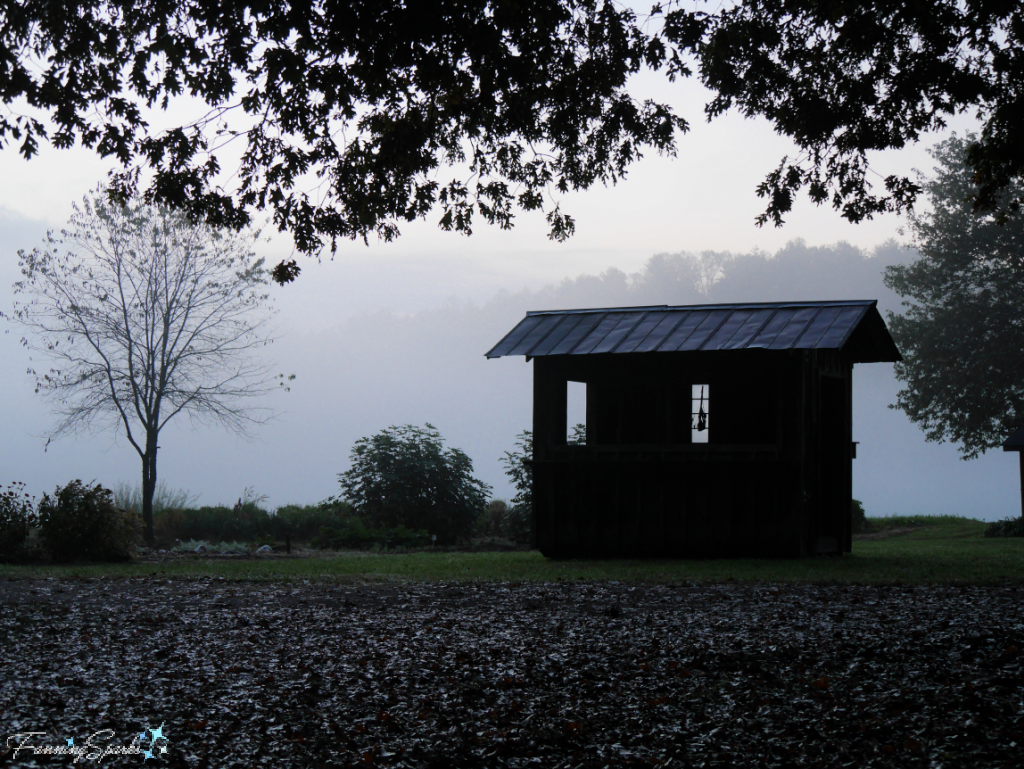
It’s fun to see how the School’s gardens change and evolve. For instance, there’s a renewed focus on growing plants for natural dyeing. These photos show the early stages of the new Dyer’s Garden.

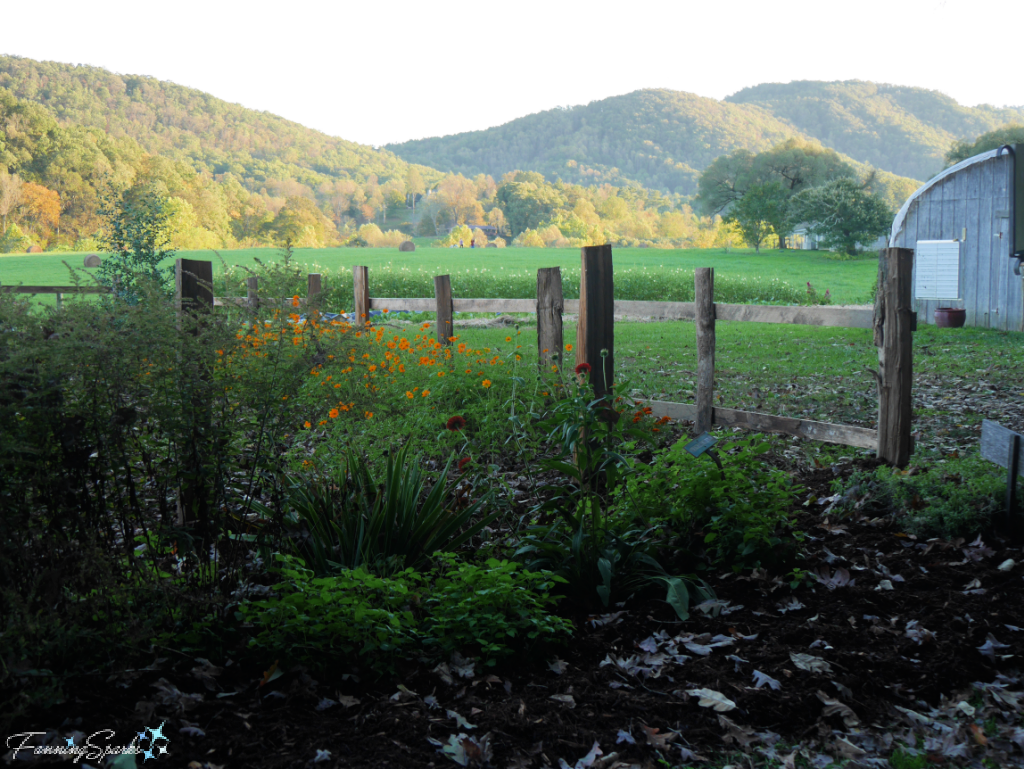 The gardens continue to provide a variety of fresh vegetables and, surprisingly, edible flowers for the School’s Dining Hall. Harvesting nasturtiums was a special treat—especially on days when you were the one serving them up for students at the Dining Hall’s salad bar.
The gardens continue to provide a variety of fresh vegetables and, surprisingly, edible flowers for the School’s Dining Hall. Harvesting nasturtiums was a special treat—especially on days when you were the one serving them up for students at the Dining Hall’s salad bar.
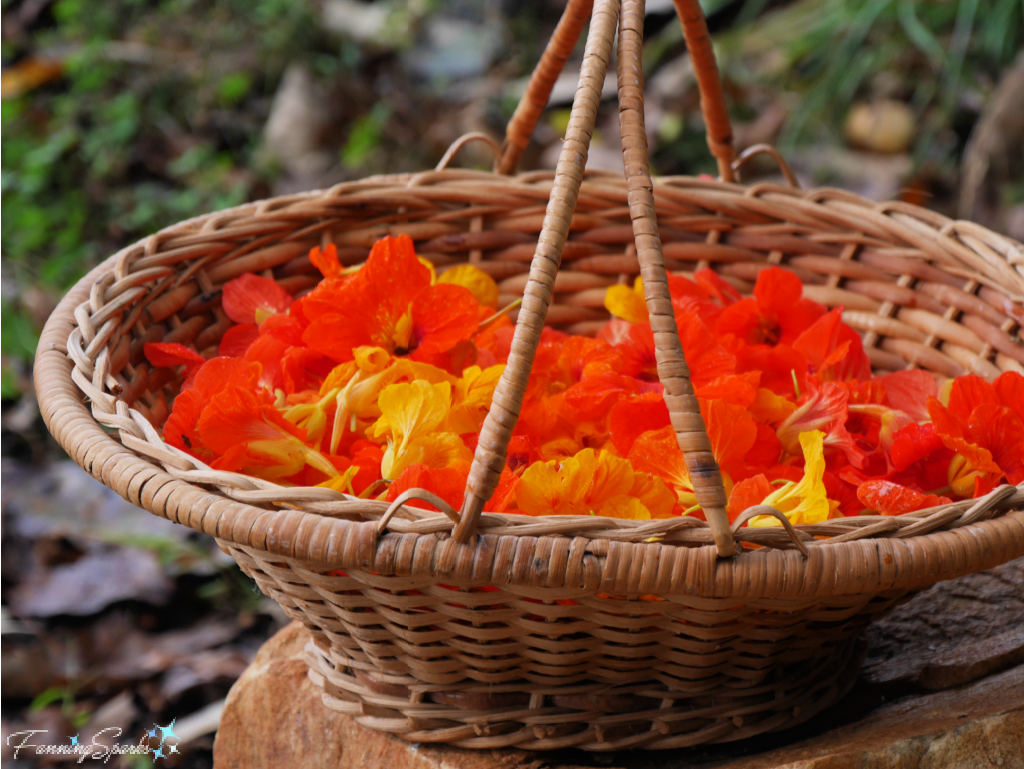
Moulton Gardens
Another special spot established in memory of a loved one is Moulton Gardens. Dedicated to Gertrude E Moulton M.D., this little-known space is tucked in the woods on the way to the Woodturning Studio.
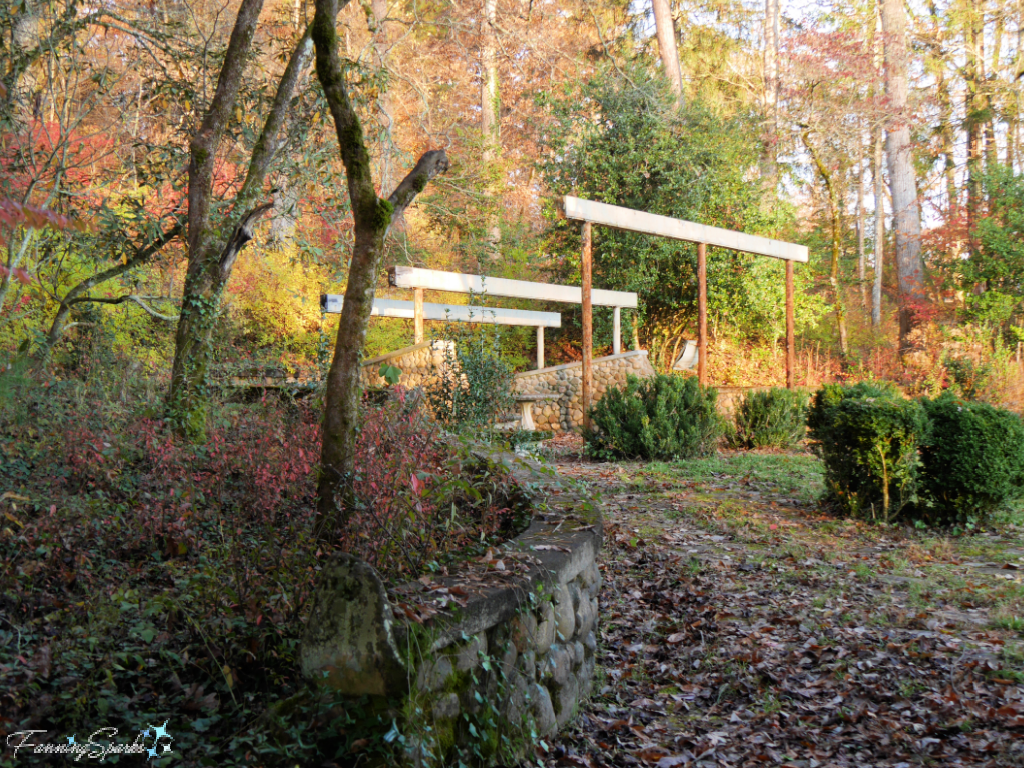
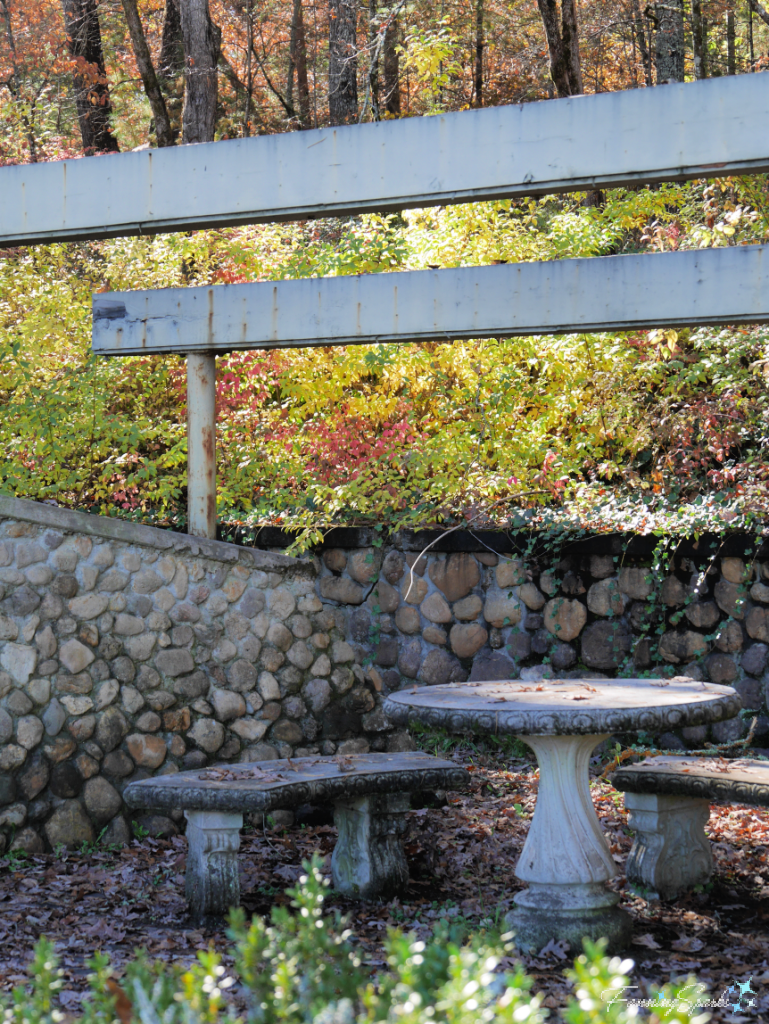 Moulton Gardens offers a spectacular view of the mountains especially in the early morning.
Moulton Gardens offers a spectacular view of the mountains especially in the early morning.
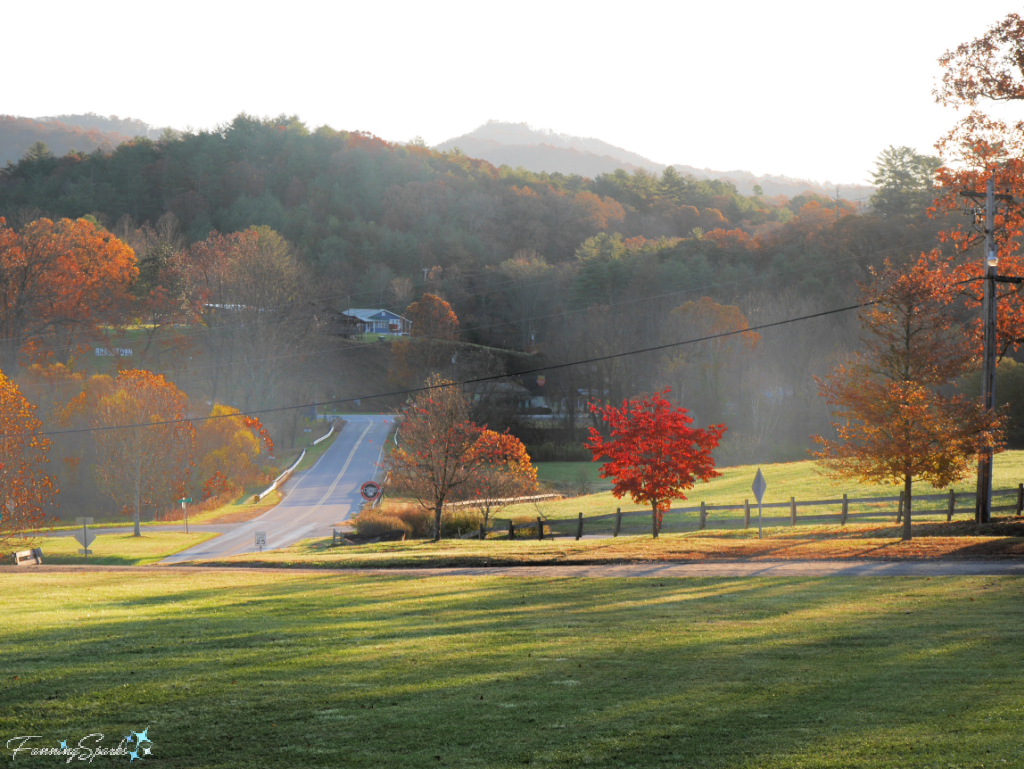 Views from Davidson Hall
Views from Davidson Hall
Speaking of spectacular views, the campus is surrounded by them! Davidson Hall is a favorite spot for enjoying the scenery.
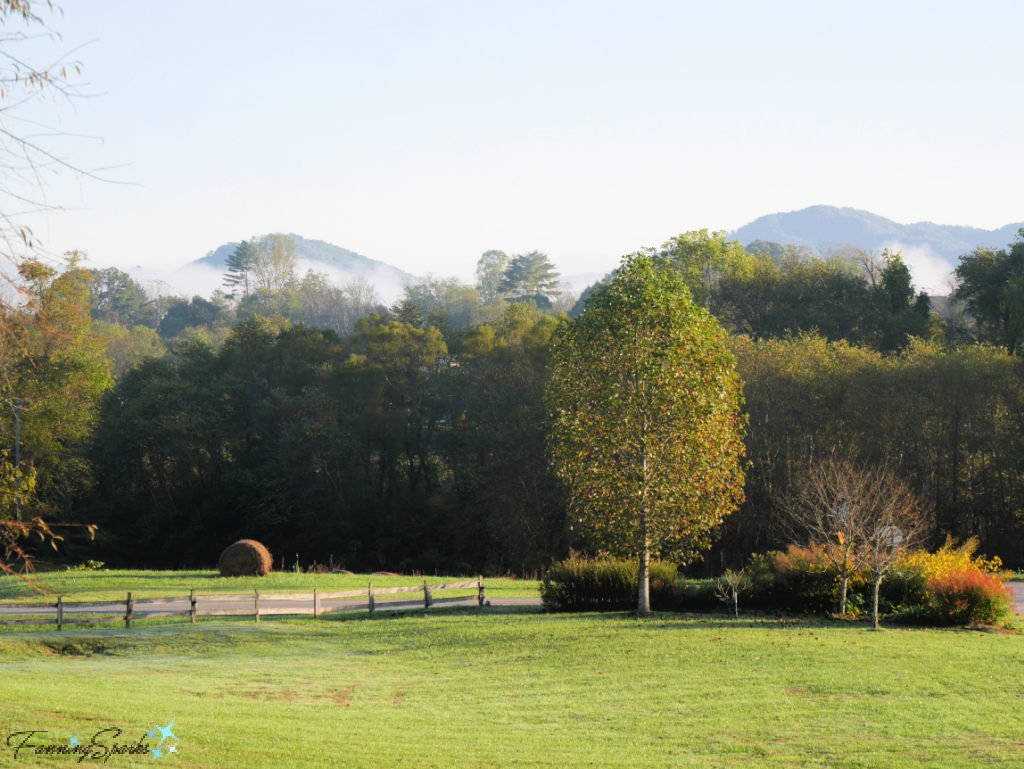
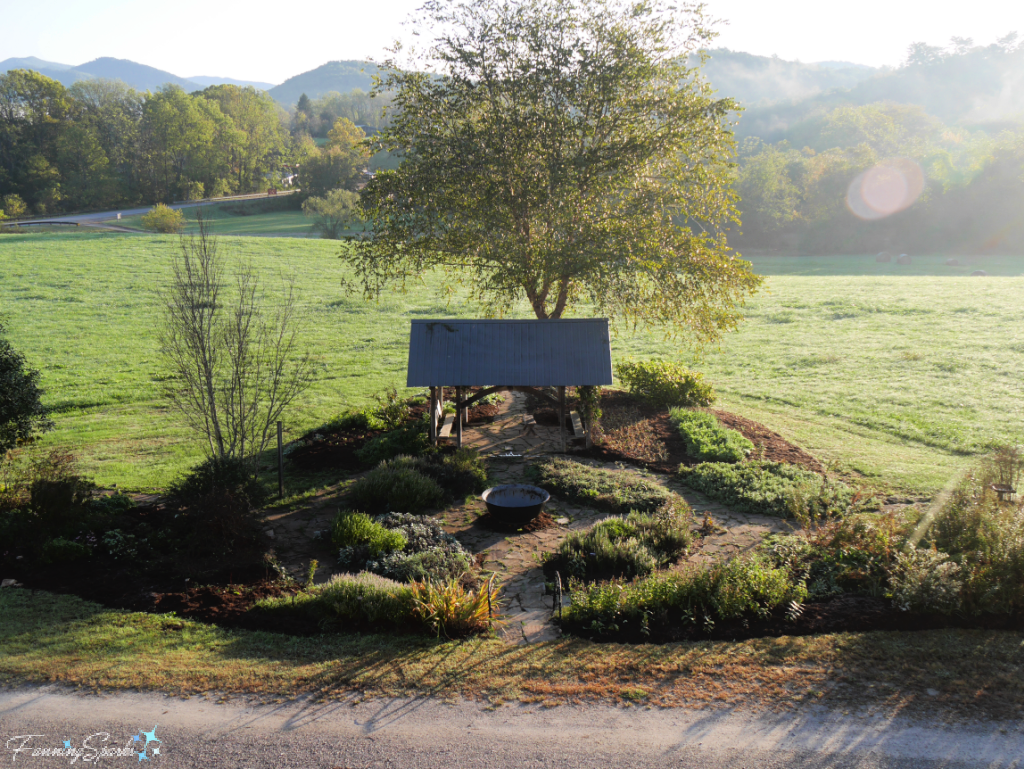
Views from Orchard House
Another popular favorite spot to absorb and thoroughly enjoy the beautiful views is Orchard House.
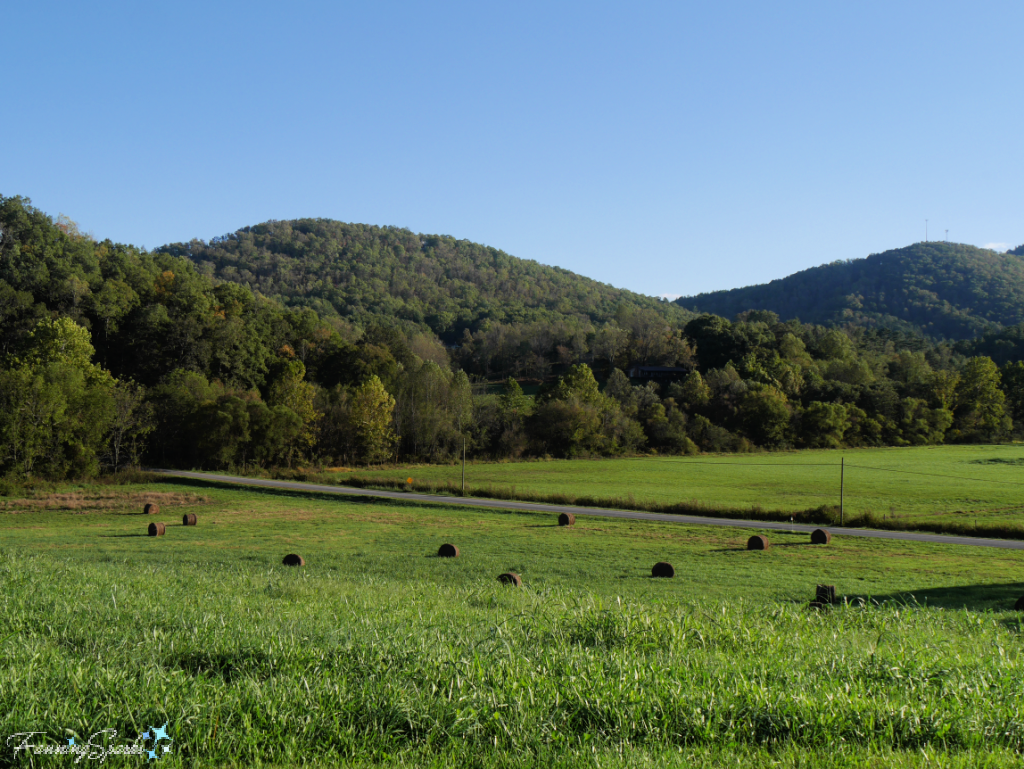
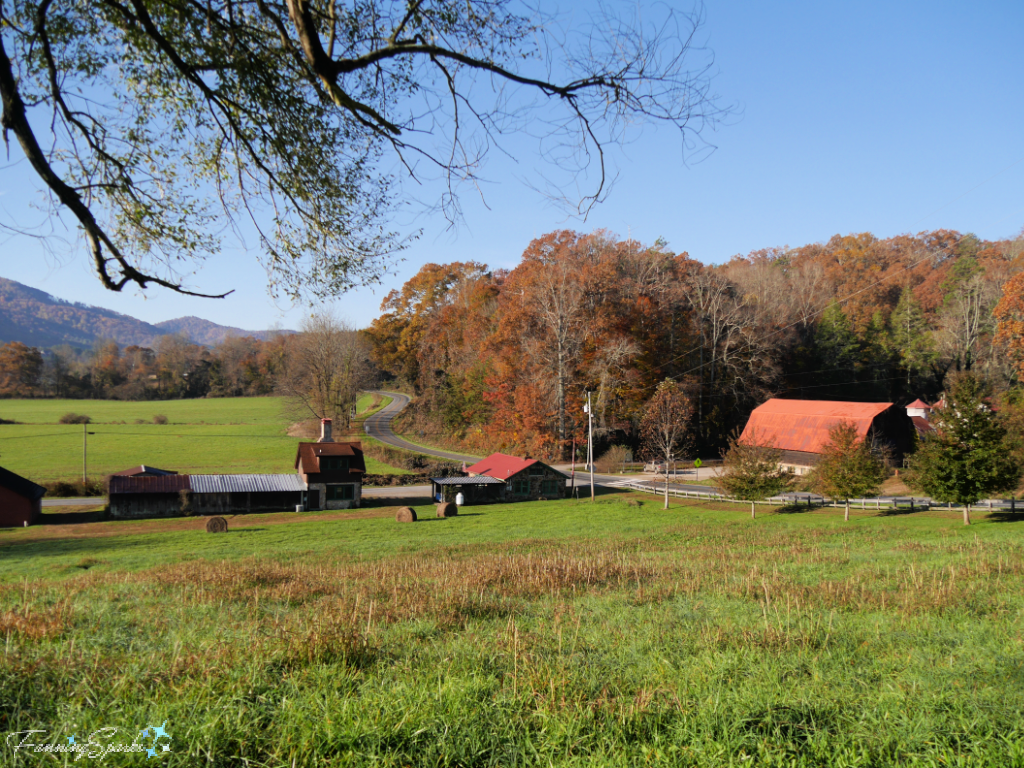
Walking Paths to Keith House
To wrap up this list of favorite spots, I’ll include a photo from the wooded walking paths heading to Keith House. Students walk these lovely natural trails multiple times a day as they traverse the campus from housing to Dining Hall to studio.
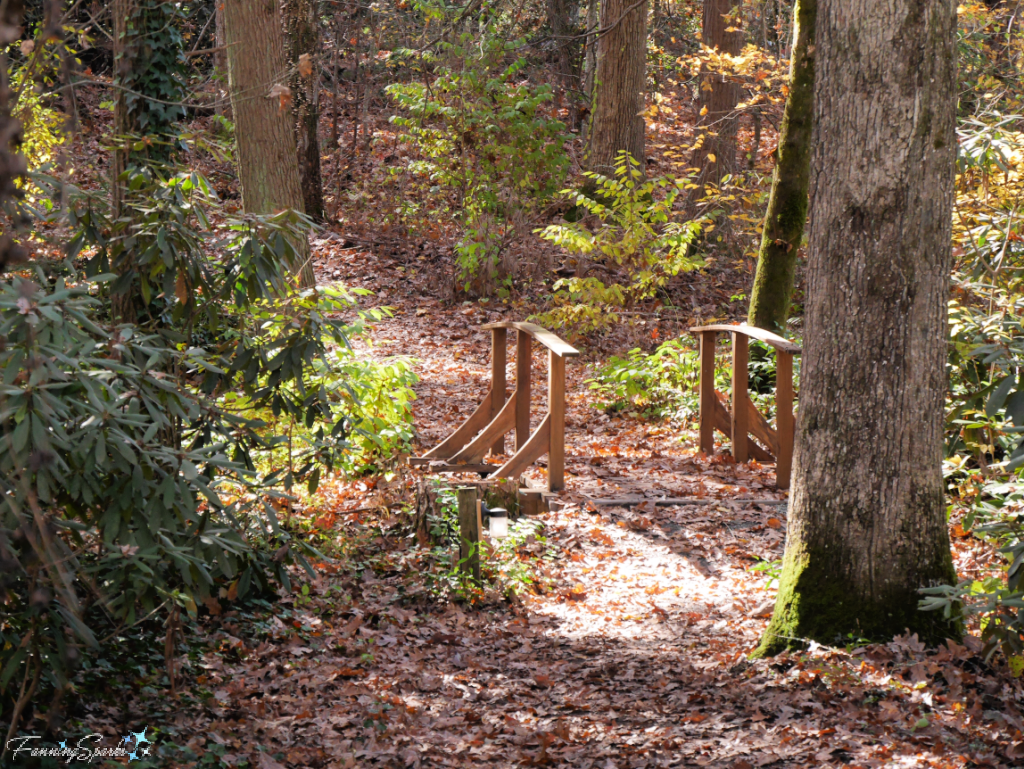 For folks familiar with the John C Campbell Folk School, did you see your favorite spot in today’s post? Or did we miss one? Please feel free to share in the comments below.
For folks familiar with the John C Campbell Folk School, did you see your favorite spot in today’s post? Or did we miss one? Please feel free to share in the comments below.
More Info
To learn more about the history of the John C Campbell Folk School, check out the Craft Revival section of the Western Carolina University Hunter Library Digital Collections. As noted on the website “The Craft Revival project’s primary objective is to create a web-based digital history documenting the Craft Revival movement that occurred in western North Carolina from 1895 to 1945. A main component of the project is a virtual collection of documents, photographs, craft objects, and artifacts that tells the story of the Craft Revival. This virtual collection consists of digital surrogates that reside together in a database, maintained by Western Carolina University’s Hunter Library”.
Here are links to the archived photos specially mentioned in this post:
. There is a series of eight photographs from 1926, believed to have been taken by Marguerite Butler (Bidstrup), chronicling the construction of the Log Museum.
. A photo from around 1930 shows three men standing outside the Spring House holding containers of milk.
For more information about the Folk School campus, see my previous posts:
. Folk School Studios—Where the Magic Happens
. A Makers’ Playground
. Artistic Details Around Campus
I’m currently participating in a 6-week Work Study Program at the John C Campbell Folk School. To learn more about the program, look for Work Study on the Folk School website or check my FanningSparks’ blog posts about my Work Study Program experience.
Today’s Takeaways
1. There are as many favorite spots and reasons for considering them special as there are people.
2. Make time to recognize those who went before us and the contributions they made.
3. Find and savor your own special place as a source of comfort, joy or wonder.


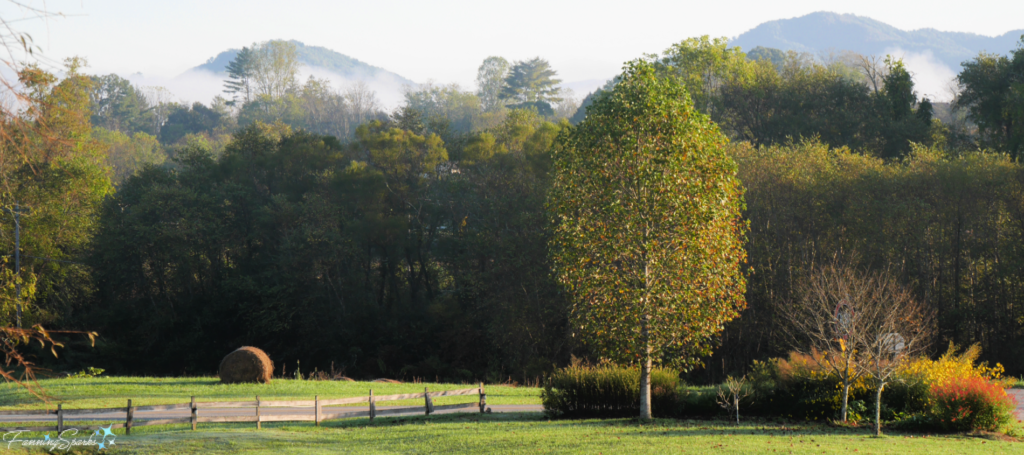


2 Comments
@Marian, My objective is, of course, to entice you to come to the Folk School! Peg
You present this place so very beautifully, and may I say invitingly. It is indeed special to be surrounded by such beauty. Thanks for sharing your special place.